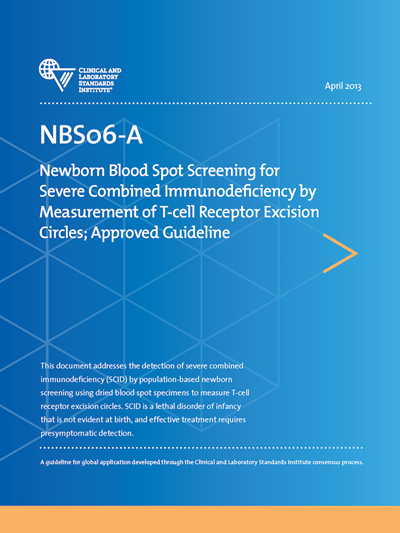CLSI NBS06
Newborn Blood Spot Screening for Severe Combined Immunodeficiency by Measurement of T-cell Receptor Excision Circles, 1st Edition
This document addresses the detection of severe combined immunodeficiency (SCID) by population-based newborn screening using dried blood spot specimens to measure T-cell receptor excision circles. SCID is a lethal disorder of infancy that is not evident at birth, and effective treatment requires presymptomatic detection.
This document is available in electronic format only.
Member price:
List Price:Details
Chairholder: W. Harry Hannon, PhD
Date of Publication: April 30, 2013
Order Code PDF: CLSI NBS06AE
ISBN Number: 1-56238-872-X
Order Code Print: print not available
Edition: First
Pages: 92
CLSI NBS06 Additional Details
If interested in ordering larger quantities of this document in print, please contact us here.
This document was formerly sold under the code ILA36.

